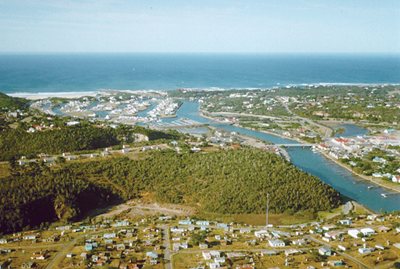Estuaries are well known for their high productivity, high carrying capacity and ability to support, apart from the resident species, a variety of migratory fish, birds and invertebrates. The maximization of this capacity depends on a variety of interacting attributes or features several of which reflect the significance of processes in the catchment and the need for a holistic approach for successful estuarine management.
Biodiversity in estuarine systems is enhanced by a number of factors such as, the size of the system, the habitat diversity, the presence of intertidal areas whether salt marsh, mangrove, sand or mud flats and by the presence of an axial salinity gradient, i.e. a gradient from full seawater at the mouth to freshwater or significantly reduced salinities at the head of the estuary.

It is clear from the preceding sentence that a combination of an open mouth, tidal action and freshwater input are generally positive factors in estuarine functioning. This should not, be interpreted as implying that the frequent closure of many of our estuarine systems, both large and small, renders them biologically or ecologically insignificant and therefore less deserving of sympathetic development. A variety of fish species as well as invertebrates such as the sand prawn and the mangrove crab all survive quite adequately in temporarily closed systems and may in fact be favoured by the conditions that exist during such periods. The life cycles of many of these species are geared to the natural cycles of opening and closing and arbitrary artificial breaching can adversely influence the successful completion of these cycles.
On the basis of the above arguments it is possible to draw up a list of actions or activities which should be avoided or prevented because of their potential for immediate or long-term damage to estuarine systems.
A major adverse influence in South African estuaries is accelerated sedimentation because of human activities in the catchment. This results in a progressive and generally irreversible loss of aquatic habitat. The only way of counteracting this, is to encourage agricultural practices which reduce erosion. Any activity which reduces or restricts tidal action in a normally tidal system should be discouraged as this interferes with a great variety of conditions or functions ranging from oxygen availability to larval dispersal.Modification of freshwater inputs through abstraction affects scouring, mouth closure patterns, salinity levels and gradients and nutrient inputs. Wherever possible, this should be prevented or at least catered for through an integrated water release management plan for major dams. Artificial breaching of sandbars at arbitrary times can be disruptive to normal patterns of migration associated with seasonal rainfall. Any form of artificial mouth management should form part of a comprehensive, holistic management plan for the estuary and catchment
Dredging can have potentially disastrous effects through erosion, re- mobilisation of pollutants from sediments with accompanying increases in turbidity, burial of organisms and general habitat destruction. Any dredging project should be subjected to a proper environment impact assessment and it would require a permit from the Department of Mineral and Energy Affairs
Uncontrolled exploitation of the living resources of estuaries through fishing or bait collection with its associated habitat disturbance in the context of the relatively small total area of South Africa’s estuaries can have serious effects. These activities are subject to regulations set by the various Provincial conservation authorities and the enforcement of these controls is very important.
Wetlands in the context of estuaries include salt marshes, mangrove swamps, intertidal sand and mud flats as well as reed beds are all integral components of estuarine environments. Excavation, reclaiming or draining these areas contribute to a loss of estuarine function which is often irreversible except at great expense. All these activities must be subjected to a proper environmental impact assessment before being permitted or undertaken.
All forms of pollution are a major potential problem in estuaries and should be avoided and reduced at all costs. The reason for this is that because of the estuary’s position as the final recipient of catchment input as well as tidal inflows from the sea. Depending on the nature of the pollutant, its concentration and degradibility, effects may vary from negligible to disastrous. Organic wastes from sewage or from sugar or paper mills lead to oxygen depletion which is reversible, although obviously lethal to many species in the short term, and sustained input of excessive amounts will result in a permanently lifeless system. Oil is also organic and hence will ultimately break down although this is very slow in anaerobic estuarine muds. Its sticky nature and blanketing effect adversely affects and may kill birds and any other animals or plants with which it comes in contact. Inorganic wastes from industrial activities include all manner of toxic materials including the heavy metals. Some of these toxins may become concentrated in higher predators including man. Outflows of coolant water from power stations may have lethal effects in warm estuaries where animals or plants are already living at temperatures close to their upper lethal limits.
Unlike the above which can all be considered as “point sources” of pollution which can be identified and possibly dealt with, agricultural fertilizers and pesticides, which are also potential pollutants, enter rivers in a diffuse fashion with run-off water. The fertilizers can induce blooms of aquatic vegetation, which subsequently die and rot causing oxygen depletion. Some pesticides such as DDT, Dieldrin and other chlorinated hydrocarbons may persist for years and be passed up the food chain due to their tendency to accumulate in fat deposits.